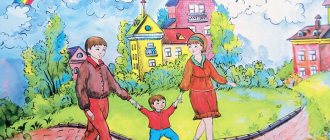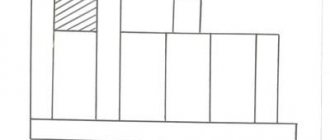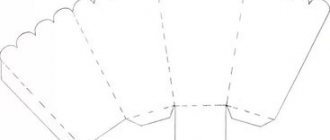Summary of OOD designing “House” in the senior group
Summary of GCD
Educational area:
design
Topic: “At Home”
Age group:
senior
Goal:
to introduce children to different types of houses and parts of the house;
increase knowledge about house designs. Objectives:
- To teach children to navigate the types of residential buildings, to consolidate the ability to build according to the proposed plan-scheme, to continue to teach children to compose creative stories and complex common sentences.
— Develop thinking, creative imagination, fine motor skills. — To instill in children respect for the work of builders; cultivate a caring attitude towards your home. Materials:
paintings of houses, small and large building materials (Legos, blocks), foundation diagrams.
Vocabulary work
: kitchen, bathroom, hall, hallway, hollow, hole, multi-story house, one-story house.
Progress Educator:
Hello, guys!
Today is a very good day! Even though it’s cold late autumn outside, it’s warm and cozy in our group. Is it also cozy and warm in the forest? Where do animals hide from the cold? (children’s answers). The dwellings where animals live are called differently. Educator:
Let's remember again where the animals live.
I will read the beginning of the poem, and you will finish it: The bear lives in ... (den), Fox, badger - in ... (hole), Beaver built ... (hut), Squirrel lives in ... (hollow), Mole under ... (ground) ) huddles - There he is with his whole family. Where do you and I live? Who can tell me quickly? ( Children's answers.
)
Educator:
That's right, guys, we live in houses, in apartments.
Each of you has a home - a place where you live with your family. There are different houses and they are called differently: wooden, brick, panel. How do you understand these names? What kind of house is yours? ( Children's answers; the teacher displays pictures of houses). Educator:
Indeed, guys, you are right.
Wooden houses are houses built from wood, brick houses are made from bricks, panel houses are made from blocks. Houses can also be one-story or multi-story. How do you understand these names: one-story house, multi-story house? ( Children's answers
.)
Educator:
That's right, a house consists of one floor, a multi-story house means it consists of two or more floors.
What kind of houses do you live in? Tell me, please. (Several children talk about their home.)
Educator:
You see, guys, some of you live in an apartment in a multi-storey building, someone lives in their own house (on land, a private house)
Educator:
Guys, we have found out what a house is for and what it is like.
Please tell us what your house consists of? What's in it? How many rooms? ( Children's answers
).
Educator:
Let's imagine that we open the door, enter the house and see all this at once or not?
( Children's answers
).
( We have all this in certain places - in our rooms). Educator:
To find out what rooms there are in our houses, I suggest you solve riddles: Our mother is in this room More often, Sometimes porridge escapes from the pan here.
( Kitchen
)
What is a kitchen for? What are they doing there? ( Answers children
j)
We brush our teeth, wash our hands, and swim in the evening. Every morning we are bored, we just wash ourselves. ( Bathroom
.)
- What is a bathroom for? ( Children's answers)
Sweet dreams I always dream at night in this room. And in the morning, a ray of sun sometimes wakes me up. ( Bedroom.)
In this room, the whole family gathers together, Sometimes to have fun, Sometimes to play, Everyone watches TV Or reads books. ( Hall.)
This room welcomes everyone who comes to our house. ( Hallway
)
Educator:
Guys, you are great! All the riddles have been solved! Let's play the game “Building a House” and turn into young builders.
Physical exercise.
What does it cost us to build a house? Is there a foundation, can we live? (sat down) We build further walls (stand up) And we look out of our window (arms bent at the elbows) The roof protects us from bad weather (arms above our heads) It will cover everyone all year round.
Educator
: Guys, now let's remember what everyone has at home?
( Children's answers
).
Educator:
That's right, the house has a roof, windows, doors, a kitchen and much more. And why this is needed, we will now find out.
Educator:
Guys, today I invite you to build models of houses for our families.
Do you know what a layout is? (this is a smaller version of the buildings).
Educator:
I suggest you go to the table and take 1 sample. The foundation is the foundation of the house; it must be strong, strong, and stable. Think about it, and perhaps you will build a foundation in two rows, strengthening each other. Don't forget that the house must have windows. The more windows, the brighter the house. The house must have a roof. It can be of any shape.
Independent activity of children, during which the teacher corrects the children’s work: gives advice on building houses.
View all received houses.
Educator:
Our work is ready.
Look how many interesting houses we have created! ( Children's suggestions
).
Educator:
Tell us about the house you built: what size is your house?
What is he like outside and inside? What's unusual about it? Why would you want to live in it? ( Answers, children's stories).
Educator:
Today you and I built houses for our families.
Reflection.
What new did you learn today? What did you like?





